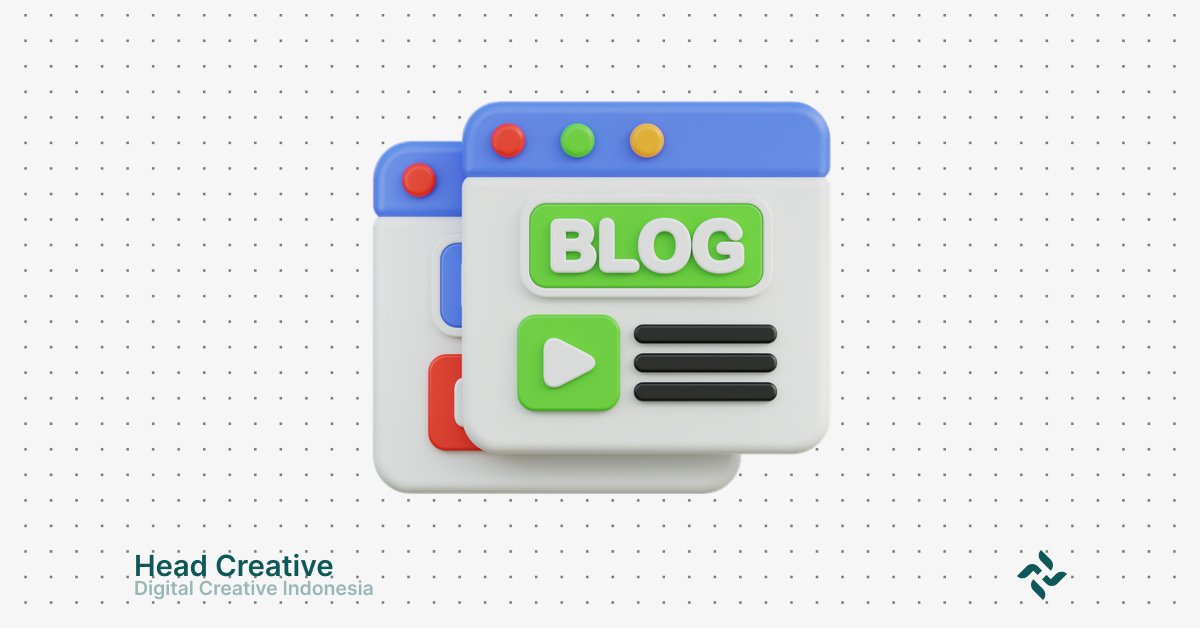Why Should You Understand the Difference Between a Website and a Blog?
In today’s fast-paced digital era, websites and blogs are two essential elements in building an online presence. Whether you are a business owner, content creator, or someone who wants to express themselves online, understanding the difference between a website and a blog is a crucial first step.
Website and Blog: Two Pillars of the Digital World
A website is a formal representation often used for professional purposes, such as companies, organizations, or online stores. Its structure and content are typically more static.
A blog, on the other hand, is more dynamic, designed to share ideas, information, or stories regularly in a reverse chronological format.
Both platforms have their unique strengths, but they often confuse many people, especially those just starting their digital journey.
Why Is It Important to Understand the Difference Between a Website and a Blog?
Not all online platforms are created equal. Understanding the difference between a website and a blog will help you:
- Choose the right platform for your needs, whether it’s to build a business, share hobbies, or simply create a digital footprint.
- Optimize content strategy, as blogs are often used for SEO and content marketing, while websites focus more on branding and permanent information.
- Avoid technical mistakes, such as choosing an incorrect format or structure that doesn’t align with your goals.
Fun Fact: Website or Blog – Which Is More Popular?
Did you know there are over 600 million active blogs worldwide today? This shows how blogs have become a powerful tool for sharing ideas and building an audience. On the other hand, websites remain the backbone for businesses and institutions, offering an irreplaceable professional impression.
Understanding Websites and Blogs
To fully grasp the difference between a website and a blog, it’s essential to understand their definitions and purposes. Both platforms are designed for different needs, so knowing the differences will help you choose the right one for your goals.
What Is a Website?
A website is a collection of interconnected pages under a single domain, designed to provide permanent or semi-permanent information. Websites often serve as the primary face of a business, organization, or individual seeking professionalism and trustworthiness online.
Key Features of a Website
- Static Structure: Content rarely changes and focuses on important information that doesn’t require frequent updates.
- Primary Function: To provide comprehensive information about a business, services, or products, such as “About Us,” “Contact,” or “Products” pages.
- Formal Design: Websites typically have a more professional and structured appearance.
Examples of Usage:
- Businesses: Official websites for e-commerce or service providers.
- Portfolios: To showcase creative work like graphic design, photography, or writing.
Popular Examples:
- Online Stores: Amazon, Tokopedia.
- Institutional Websites: School or university websites.
- Personal Portfolios: Artist or graphic designer websites.
What Is a Blog?
A blog is a digital platform focused on publishing articles or content in reverse chronological order (newest posts appear first). Blogs are designed to share ideas, experiences, or information in a more personal and dynamic format.
Key Features of a Blog
- Dynamic Structure: Content is updated regularly, providing visitors with something new to enjoy.
- Focus on Articles: Content often includes long-form writing, complemented by images or videos to support the story.
- Casual Tone: Compared to websites, blogs use a more personal and entertaining tone.
Examples of Usage:
- Hobbies or Interests: Travel blogs, food blogs, or beauty blogs.
- Niche Information: Tech blogs, SEO blogs, or health blogs.
- Marketing Strategy: Many businesses use blogs to improve SEO and attract audiences through informative content.
Popular Blog Examples:
- Travel Blogs: Nomadic Matt.
- Health Blogs: Dr. Axe.
- Business Blogs: HubSpot Blog.
Website vs. Blog: Differences Based on Practical Usage
To better understand the difference between a website and a blog, here is a practical comparison:
| Aspect | Website | Blog |
|---|---|---|
| Primary Purpose | Branding and permanent info | Latest and dynamic information |
| Tone | Formal and professional | Casual and personal |
| Examples | Company sites, portfolios | Travel blogs, tech blogs |
By understanding these differences, you can choose the platform that best suits your objectives, whether for professional branding, sharing regular updates, or growing your audience through valuable content.
Read Also: The Importance of Website Security and How to Protect It
Key Differences Between a Website and a Blog
After understanding the definitions of each, it’s time to discuss the key differences between a website and a blog. While they are often considered similar, there are several critical aspects that set them apart. By understanding these differences, you can easily determine which platform suits your needs.
1. Content Structure
- Website: The content on a website is static, meaning updates occur rarely and only for significant changes. Its main structure includes fixed pages such as “About Us,” “Services,” and “Contact.”
- Blog: In contrast, blogs are dynamic, with content updated regularly. The latest posts always appear at the top, creating a relevant pattern for audiences seeking the most up-to-date information.
2. Primary Function
- Website: Functions as a permanent source of information about a company, products, or services. Websites often act as branding tools that project a professional and trustworthy impression.
- Blog: Used for routine updates in the form of articles, aiming to share insights, experiences, or the latest news. Blogs are also strategic tools for SEO and building relationships with audiences.
3. Writing Style
- Website: Typically uses a formal and professional tone. This is important as websites often serve as representations of businesses or organizations.
- Blog: More relaxed and personal, fostering a closer relationship with readers. This style allows bloggers to speak directly to their audience, often with a friendly and interactive tone.
4. Target Audience
- Website: Targets audiences seeking business or corporate information, such as potential customers, business partners, or investors.
- Blog: Often targets individuals or niche communities, such as food enthusiasts, travelers, or tech fans.
Summary Table: Differences Between a Website and a Blog
| Aspect | Website | Blog |
|---|---|---|
| Content Structure | Static, focuses on fixed pages | Dynamic, focuses on latest articles |
| Primary Function | Permanent information and branding | Regular updates, sharing current info |
| Writing Style | Formal and professional | Relaxed, personal, and interactive |
| Target Audience | Business/corporate, partners, customers | Individuals or niche communities |
Conclusion
The difference between a website and a blog not only lies in how content is presented but also in how these platforms are designed to meet the needs of different audiences. Whether you want to create a professional impression for your business or build a community with relevant content, understanding these differences is the key to your success in the digital world.
Take Advantage of Our Services: Website Development Solutions
The Relationship Between Websites and Blogs: A Harmonious Collaboration
After understanding the differences between websites and blogs, you might wonder: are they always separate? The answer is no. In fact, blogs often become a part of websites, creating a synergy that strengthens overall digital presence.
Blogs as Part of Websites
Blogs don’t need to stand alone. In many cases, blogs are integrated into websites to add value for the audience. This is a highly effective strategy, especially for businesses and organizations, to enrich their content while improving visibility in search engines.
Benefits of Blogs Within Websites
- Boosting SEO: With a blog, websites can regularly publish fresh content relevant to specific keywords, including terms like “Difference Between Website and Blog.”
- Attracting New Audiences: Blog articles help attract readers who may become interested in the products or services offered on the website.
- Building Trust: Blogs allow businesses to share insights, guides, or case studies, building authority in their industry.
- Better Interaction: Blogs create opportunities for direct communication with audiences through comments or feedback.
Examples of Integration: Business Websites with Blogs
1. E-Commerce with a Blog
E-commerce sites like Tokopedia or Amazon often feature blogs offering shopping tips, product guides, or the latest trends. These blogs help shoppers make more informed decisions.
2. Corporate Websites
Tech companies like HubSpot have blogs that provide information on marketing, CRM, and business strategies. This not only attracts readers but also directs them toward using the company’s products and services.
3. Personal or Portfolio Websites
A photographer or graphic designer can add a blog to their portfolio website to share behind-the-scenes stories, technical tips, or creative inspirations. This helps audiences feel more connected to their personal brand.
Why Integrating a Blog into a Website Is the Right Choice
Combining a blog and website provides numerous strategic benefits, including:
- Management Efficiency: All content can be managed under one domain, simplifying maintenance.
- Brand Consistency: An integrated blog reinforces brand messaging and identity across the platform.
- Increased Traffic: Blogs attract new visitors who can eventually explore other parts of the website.
Conclusion
Understanding the difference between a website and a blog is essential for building an effective online presence. Both have unique functions, structures, and purposes but complement each other in the digital world.
- A website is a more static platform, focusing on permanent information and professional branding, often used by businesses, organizations, or individuals to build trust and authority.
- A blog is a dynamic platform designed for regularly sharing content with a casual, personal tone, often used to attract audiences through relevant updates.
Although different, websites and blogs are often combined to create synergy that enhances visibility, interaction, and online authority. For example, a business website with a blog can maximize SEO, attract new visitors, and build closer relationships with the audience.
Choose the Right Solution for Your Needs
Do you need a platform to showcase a professional portfolio or share personal stories and ideas? Understanding these differences will help you make the right decision.
With the right combination of a website and a blog, you can create an online presence that is not only engaging but also effective in achieving your goals.


